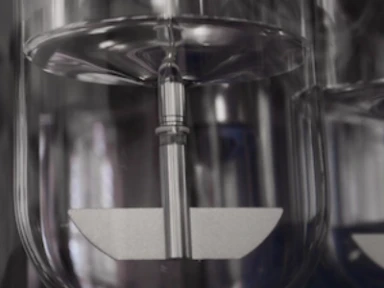The Explorer Study
Efficacy and Safety of Rosuvastatin 40 mg Alone or in Combination with Ezetimibe in Patients at High Risk of Cardiovascular Disease (Results from the EXPLORER Study)
Christie M Ballantyne, Robert Weiss, Tiziano Moccetti, Anja Vogt, Bernd Eber, Froukje Sosef, Emma Duffield, EXPLORER Study Investigators
Objective
The aim of the "EXPLORER (EXamination of Potential Lipid-modifying effects Of Rosuvastatin in combination with Ezetimibe versus Rosuvastatin alone)" study is to compare the efficacy and safety of the most effective and highest marketed dose of rosuvastatin (40 mg) alone or in combination with ezetimibe 10 mg for 6 weeks in high-risk patients with hypercholesterolemia.
Endpoints:
In This 6-week, open-label, randomized, parallel-group study, Patients were required to discontinue lipid-lowering therapy before entering a 6-week dietary lead-in period. Eligible patients then were randomly assigned (1:1) to treatment with rosuvastatin 40 mg monotherapy or rosuvastatin 40 mg/ezetimibe 10 mg combination therapy.
Patients were Men and women aged ≥18 years with hypercholesterolemia and a history of CHD or clinical evidence of atherosclerosis or a CHD risk equivalent (10- year CHD risk score >20%) were eligible for randomization if the mean of their 2 most recent fasting LDL cholesterol levels was ≥160 mg/dl and <250 mg/dl and the 2 measurements were within 15% of each other. Eligible patients were also required to have a fasting triglyceride (TG) concentration of <400 mg/dl.
Methods
The primary endpoint was the percentage of patients achieving the Adult Treatment Panel III (ATP III) LDL cholesterol goal (<100 mg/dl) after 6 weeks of treatment. Secondary efficacy endpoints included the percentage of patients achieving the ATP III non–high-density lipoprotein (non-HDL) cholesterol goal (non-HDL cholesterol <130 mg/dl and LDL cholesterol <100 mg/dl when baseline TG ≥200 mg/ dl); 2003 European LDL cholesterol goals (<2.5 or 3.0 mmol/L [100 or 115 mg/dl], depending on risk category); combined 2003 European LDL cholesterol and total cholesterol (TC) goals (LDL cholesterol <2.5 or 3.0 mmol/L [<100 or 115 mg/dl] and TC <4.5 or 5.0 mmol/L [<175 or 190 mg/dl], depending on risk category); and percent change from baseline in LDL cholesterol, HDL cholesterol, TC, TG, non-HDL cholesterol, lipid ratios (LDL/HDL cholesterol, TC/HDL cholesterol, and nonHDL/HDL cholesterol), apolipoprotein A-I, apolipoprotein B, and apolipoprotein B/apolipoprotein A-I ratio, and changes in high sensitivity C-reactive protein (hs-CRP) at week 6.
Results:
469 were randomly assigned (230 to rosuvastatin 40-mg monotherapy and 239 to rosuvastatin 40-mg plus ezetimibe 10-mg combination therapy). Significantly more patients receiving rosuvastatin/ezetimibe than rosuvastatin alone achieved their ATP III LDL cholesterol goal (<100 mg/dl, 94.0% vs 79.1%, p <0.001) and the optional LDL cholesterol goal (<70 mg/dl) for very high-risk patients (79.6% vs 35.0%, p <0.001). The combination of rosuvastatin/ezetimibe reduced LDL cholesterol significantly more than rosuvastatin (-69.8% vs -57.1%, p <0.001). Other components of the lipid/lipoprotein profile were also significantly (p <0.001) improved with rosuvastatin/ezetimibe. Significantly (p <0.001) greater decreases in TC, non-HDL cholesterol, and TGs were also observed at week 6 in the combination therapy group compared with the monotherapy group. Significant decreases in apolipoprotein B and apolipoprotein B/apolipoprotein A-I ratio were observed in the combination therapy group compared with the monotherapy group (p <0.001 for both). Apolipoprotein A-I increased by 3.2% and 1.6% in the combination therapy and monotherapy groups, respectively (p = 0.202). median percent decrease in hs-CRP was significantly higher with combination therapy than monotherapy (-46.4% vs -28.6%, p <0.001). Both treatments generally were well tolerated. Rosuvastatin 40 mg was effective at improving the atherogenic lipid profile in this high-risk population. Combination rosuvastatin with ezetimibe 10 mg enabled greater decreases in LDL cholesterol and allowed more patients to achieve LDL cholesterol goals.
Conclusion:
Rosuvastatin plus ezetimibe may improve the management of high-risk patients who cannot achieve goal on maximal statin monotherapy.
- Ballantyne, C.M., Weiss, R., Moccetti, T., Vogt, A., Eber, B., Sosef, F., Duffield, E. and EXPLORER Study Investigators, 2007. Efficacy and safety of rosuvastatin 40 mg alone or in combination with ezetimibe in patients at high risk of cardiovascular disease (results from the EXPLORER study). The American journal of cardiology, 99(5), pp.673-680.



.webp/jcr:content/ROSETTE%20summary%20(1).webp)
